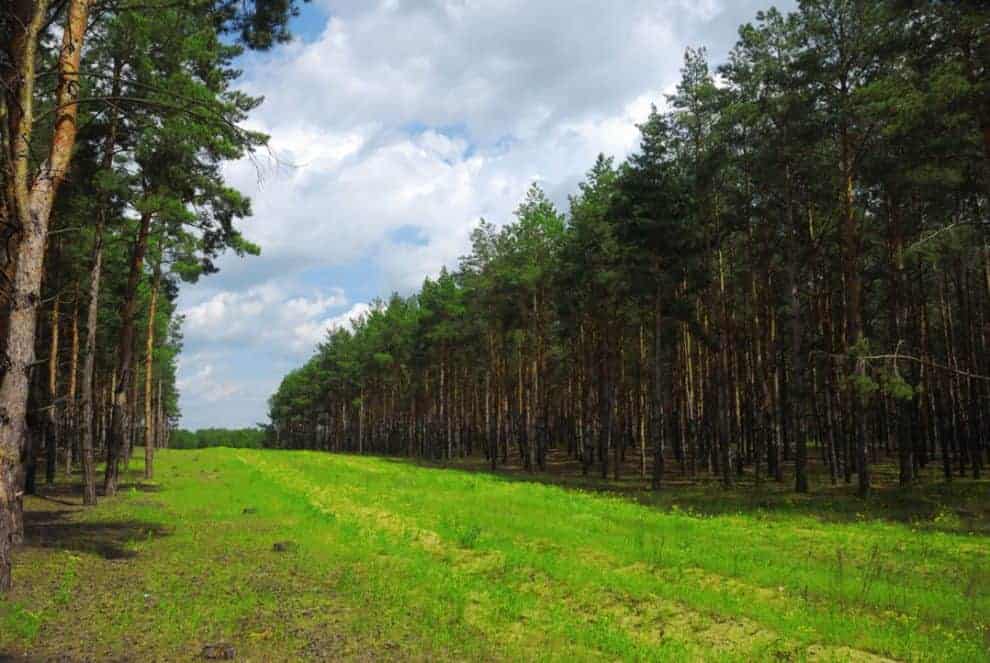Evaluating timber markets for timberland investment purposes requires analysis of both space and time. Spatial analysis – using maps and mapping software – of actual or potential wood markets initiates the process of comparing the locations of wood-using mills to each other and to the timberlands that supply their raw material. An understanding of typical hauling distances, the shape or direction of actual procurement activities and key geopolitical barriers (i.e. the Mississippi River) support this assessment.
Size and Shape Matter
Market size and shape matter. In the U.S. South, industrial facilities that use 500,000 tons of wood per year or more buy 60% to 80% of the wood they consume from within 50 air miles of the facility. The 50-mile buffer represents a zone of “intense” competition for new plants attempting to procure raw materials. Do sufficient numbers of mills procure wood from the timber market under consideration?
We often go through a mill-by-mill process to estimate the actual, current baseline wood demand and raw material competition in each timber market over time. The strengths of this approach are the ability to include current mill intelligence and to reconcile multiple data sources. The primary weakness is the dependence on mill-specific assumptions related to mill capacity, mix, chip use or consumption of recycled fiber. In practice, mills adjust their procurement activities and mixes continuously, so an analysis must take this into account.
End markets matter, too. In pulpwood markets, pulp and paper mills are of particular interest because they typically have the highest “ability to pay” for wood raw materials. Therefore, market assessments must account for trends by product and the economics associated with longer-term paper and paperboard demand.
Localizing Forecasts to the Market
Forward-looking assessments of pine and hardwood prices in local markets can include forecasts of hauling, logging and third-party forestry administration costs that account for forecasted changes in diesel prices and inflation, as well as chipping costs. Stumpage, cut-n-haul, and administration cost forecasts can be summed to estimate the total delivered costs for annual procurement budgeting or pro-forma financials for timberland investments.
When applying research to specific wood basins, localized forecasts of delivered prices requires an understanding of (1) current, baseline stumpage and logging costs by specie and product in a given market; (2) the links between changes in diesel prices and the associated impacts on logging (harvesting) and hauling (transportation) costs; and (3) how minimum and average hauling distances can vary for specific markets and geographic conditions.
Implications for Timberland Investors
Timber market analysis relies on a local understanding of wood flows and cash flows. Stumpage and logging costs differ significantly within and across markets and US regions. Previous Forisk studies confirm, for example, how assumed hauling distances for due diligence can miss when local procurement zones prove to be directionally skewed or oddly shaped due to knowable, logistic factors. In the end, a little “ground truthing” with respect to local logging, hauling and stumpage costs can strengthen any assessment and prevent avoidable errors and misconceptions.
This content may not be used or reproduced in any manner whatsoever, in part or in whole, without written permission of LANDTHINK. Use of this content without permission is a violation of federal copyright law. The articles, posts, comments, opinions and information provided by LANDTHINK are for informational and research purposes only and DOES NOT substitute or coincide with the advice of an attorney, accountant, real estate broker or any other licensed real estate professional. LANDTHINK strongly advises visitors and readers to seek their own professional guidance and advice related to buying, investing in or selling real estate.









Add Comment